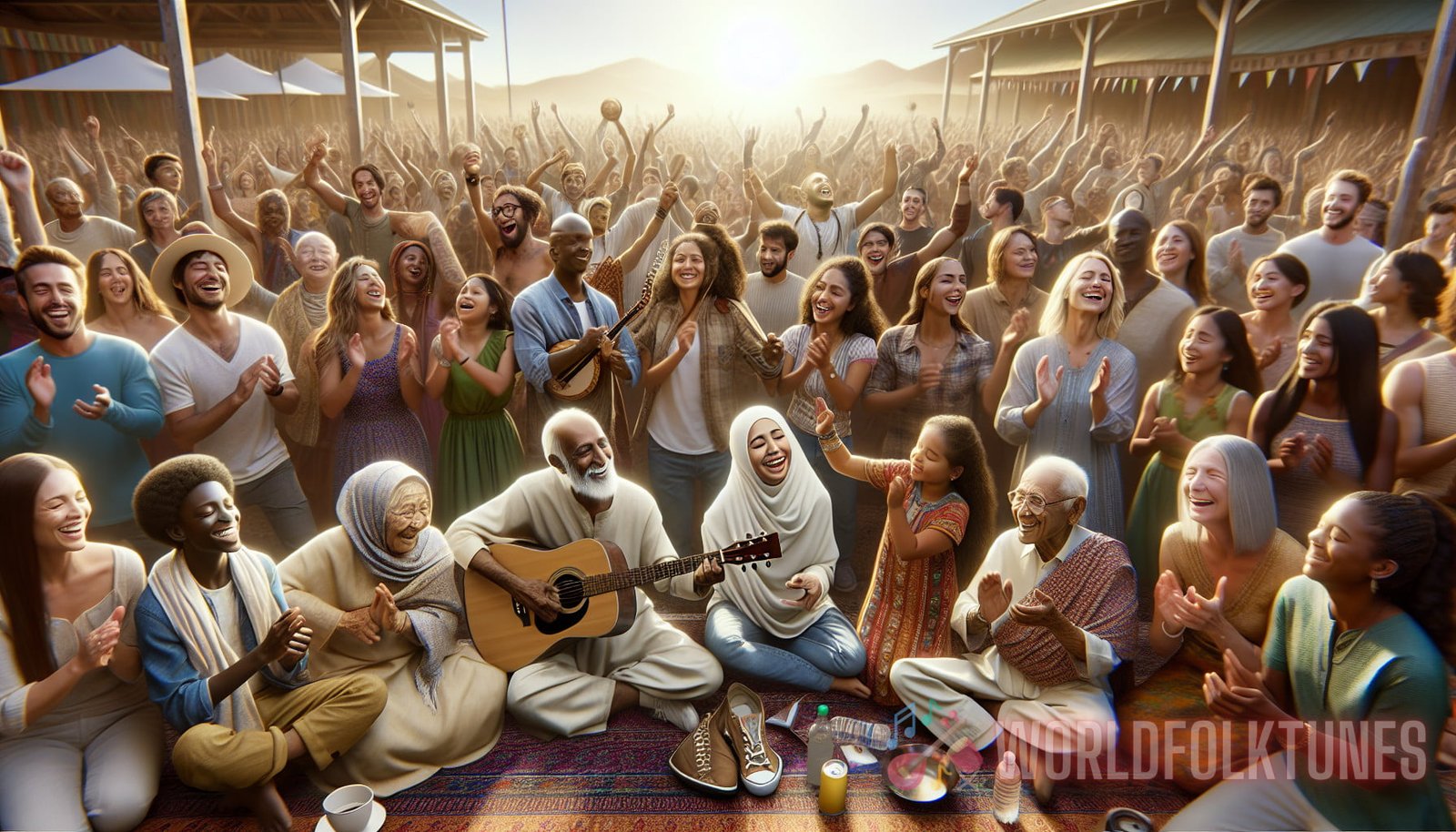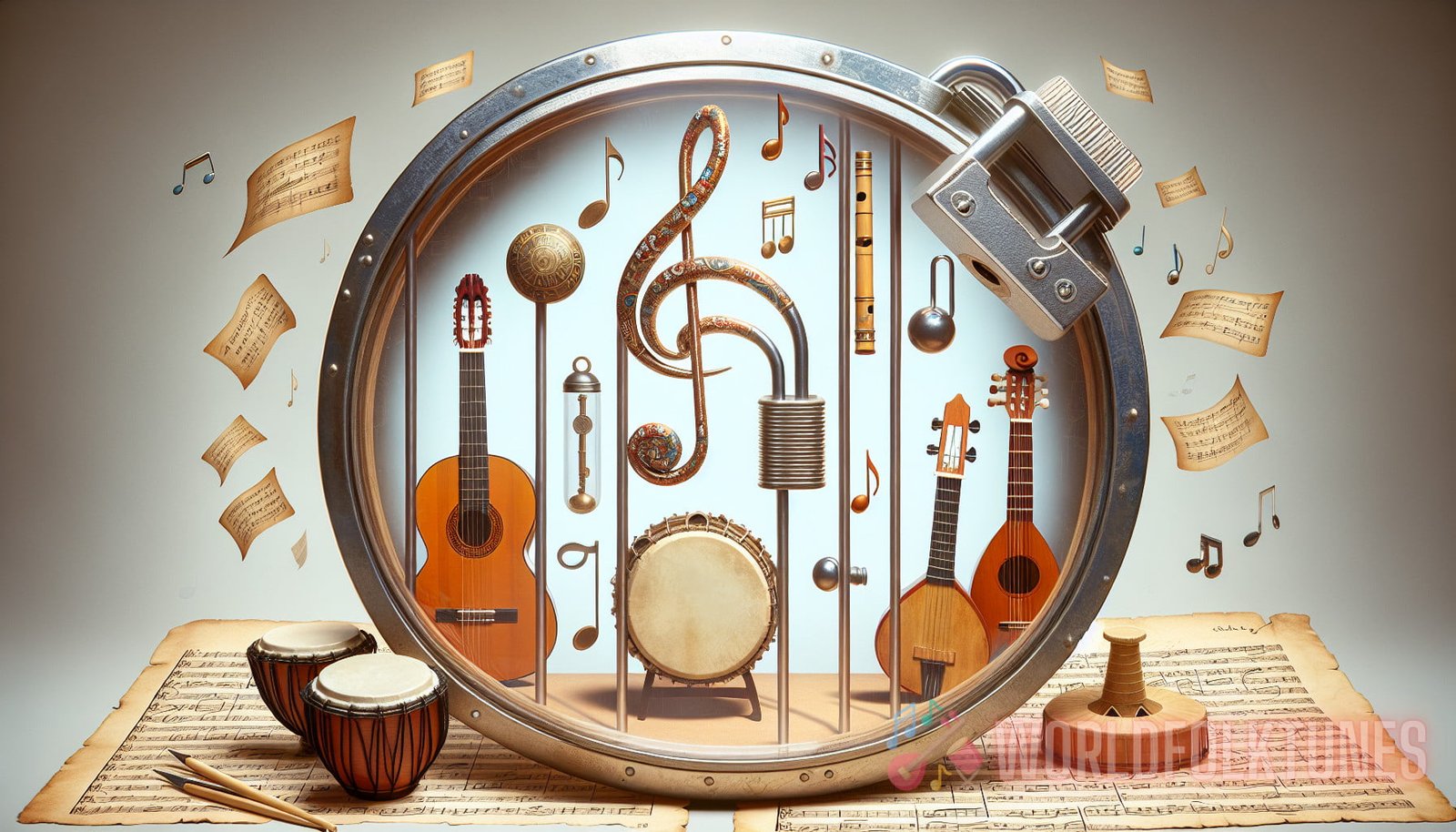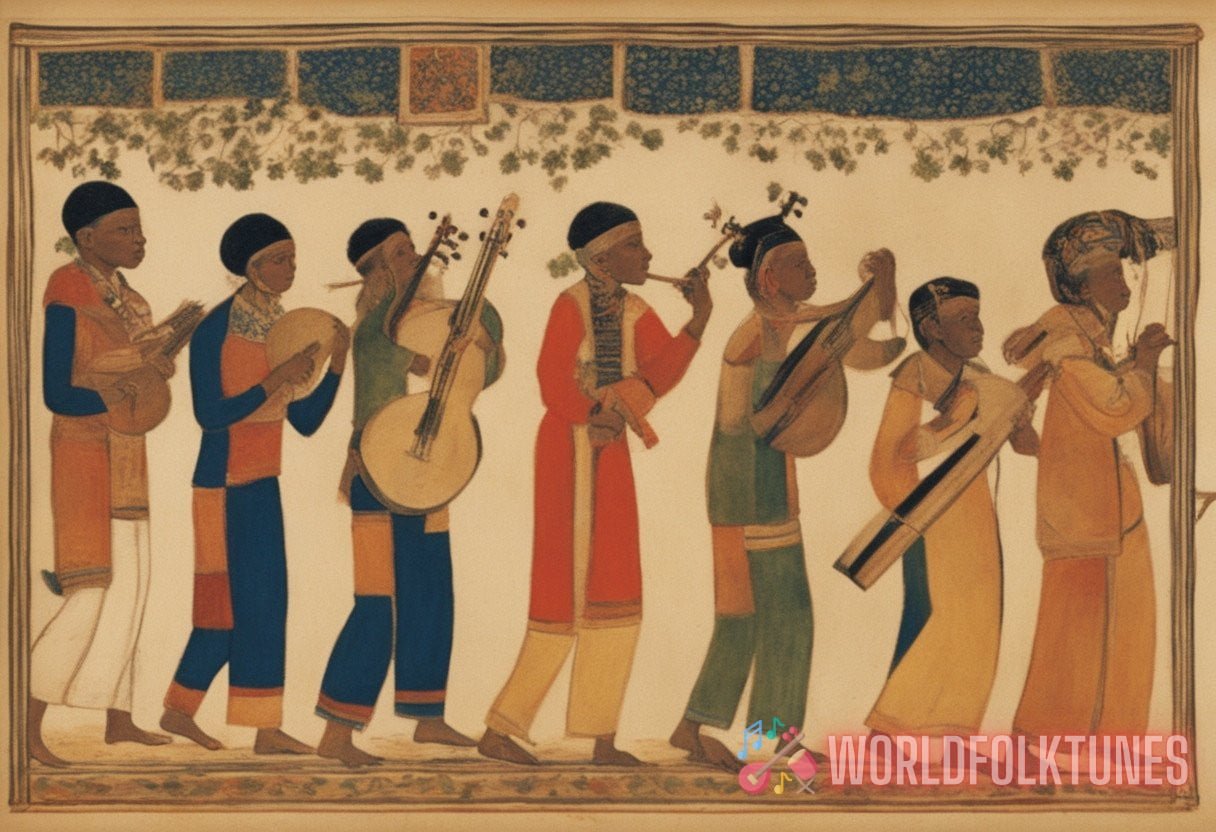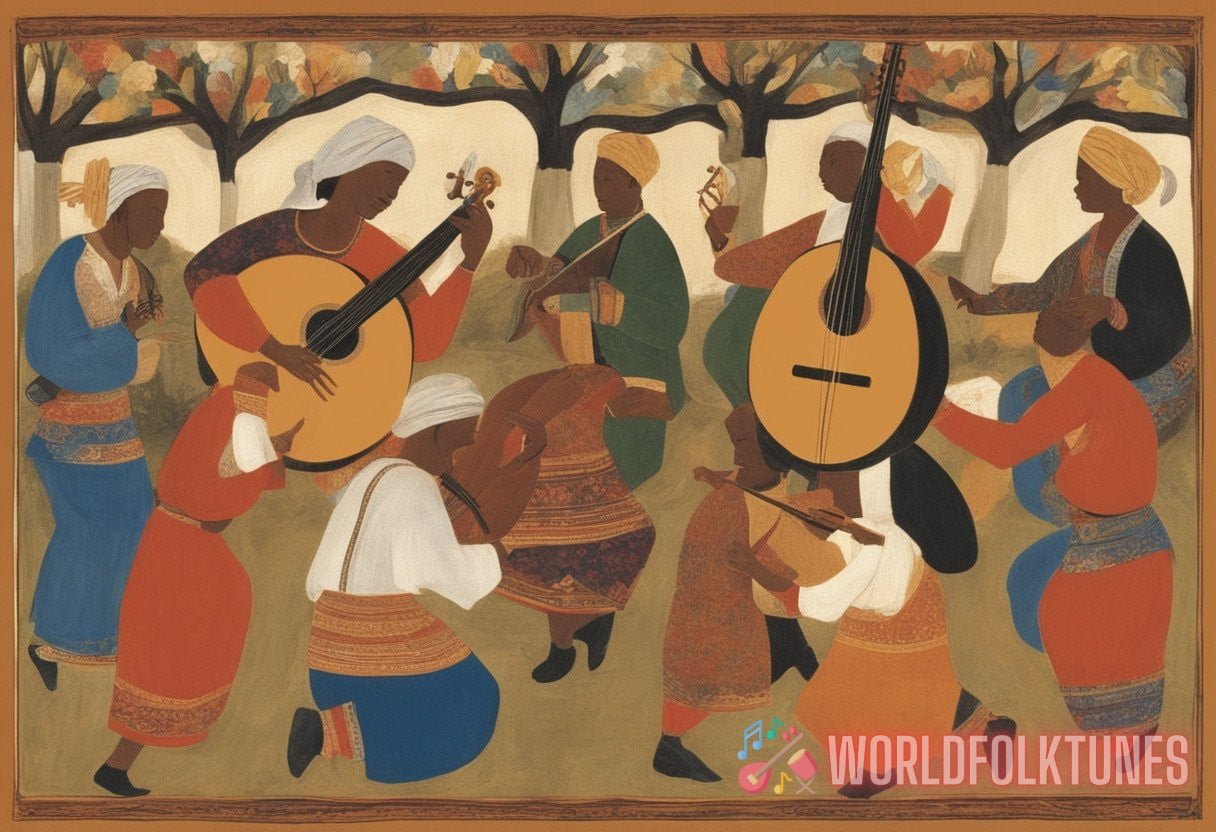Introduction
Folk music has been an integral part of human culture for centuries, serving as a means of storytelling, preserving history, and connecting generations through melodies that transcend time. These musical traditions have been passed down from one generation to another, carrying with them a wealth of cultural knowledge and intergenerational connectivity. Among the various aspects of folk music, the exploration of harmonic time capsules has become an important avenue for researchers, musicians, and enthusiasts alike.
In this article, we delve into the concept of harmonic time capsules, exploring the intergenerational connectivity of folk melodies. We examine how folk harmonies have evolved over time, the role they play in preserving cultural heritage, and the ways in which they create a sense of shared identity across generations. Join us on this musical journey as we uncover the hidden treasures of folk harmonies and their lasting impact on society.
The Evolution of Folk Harmonies
Folk harmonies have evolved over centuries, reflecting the cultural, social, and historical context in which they were created. As communities developed and migrated, the melodies and harmonies of folk music adapted and transformed, incorporating new influences and styles. Here, we explore the evolution of folk harmonies through various periods and regions:
1. Medieval Europe
In medieval Europe, folk harmonies were characterized by a simple, modal melodic structure with parallel and consecutive perfect intervals. These harmonies were often sung a cappella or accompanied by simple instruments such as the lute or lyre. The melodies were rooted in religious and secular themes, reflecting the daily lives of the common people.
2. Renaissance Era
In the Renaissance era, folk harmonies witnessed a significant shift influenced by the rise of courtly music and the introduction of polyphony. Composers such as Guillaume Dufay and Josquin des Prez incorporated folk melodies and harmonies into their compositions, creating a fusion of popular and high art music.
3. Colonial America
In colonial America, folk harmonies were shaped by the experiences of settlers from various European countries. The music of the British Isles, Ireland, Scotland, and Germany greatly influenced the melodies and harmonies of American folk music. These harmonies were often passed down orally within communities and reflected the shared experiences of the settlers.
4. Folk Revival
In the 20th century, the folk revival movement brought renewed interest in traditional folk harmonies. Artists such as Woody Guthrie, Pete Seeger, and Bob Dylan drew inspiration from the melodies and harmonies of earlier generations, revitalizing the folk music scene. This led to a resurgence of interest in folk music and the preservation of traditional harmonies for future generations.
The Role of Folk Harmonies in Preserving Cultural Heritage
Folk harmonies play a crucial role in preserving cultural heritage by acting as a vessel for transmitting historical and cultural knowledge across generations. Here, we explore how these harmonies contribute to the preservation and understanding of cultural heritage:
1. Oral Tradition
Folk harmonies are often passed down orally, from one generation to another. This oral tradition ensures the preservation of cultural knowledge, as the melodies and harmonies carry with them the stories, values, and traditions of the past. By sharing these harmonies through singing or playing, cultural heritage is perpetuated and celebrated.
For example, in West Africa, griots are traditional musical storytellers who pass down historical narratives through music. They use melodies and harmonies to recount the stories of their ancestors, preserving the cultural heritage of their communities.
2. Cultural Identity
Folk harmonies contribute to the sense of cultural identity within communities. By singing or playing these melodies, people connect with their roots, traditions, and heritage. Folk harmonies serve as a reminder of the shared experiences, struggles, and triumphs of a community, creating a sense of pride and belonging.
When individuals engage with folk harmonies, they strengthen their connection to their cultural heritage and develop a deeper appreciation for their roots. These harmonies become a source of cultural pride and identity.
3. Social Cohesion

Folk harmonies bring people together, fostering social cohesion and community engagement. Traditional folk music events, such as festivals, gatherings, and workshops, provide opportunities for individuals to come together and celebrate their shared cultural heritage. Through harmonizing melodies, people build connections, form relationships, and strengthen the fabric of their communities.
For example, in Ireland, traditional Irish music sessions are a prominent part of the culture, where musicians come together to play and share traditional tunes. These gatherings not only preserve the folk harmonies of Ireland but also serve as a rallying point for the community.
4. Intergenerational Connectivity
Folk harmonies bridge the generational gap, creating a sense of intergenerational connectivity. As melodies and harmonies are passed down from older to younger generations, a link is established between the past, present, and future. This connectivity allows for a greater understanding and appreciation of diverse perspectives, experiences, and values.
Through the transmission of folk harmonies, older generations pass on their knowledge and wisdom, while younger generations bring their own interpretations and innovations. This exchange of ideas ensures the vitality and relevance of folk harmonies, allowing them to adapt and evolve over time.
Exploring Harmonic Time Capsules
Harmonic time capsules refer to the preservation and exploration of folk harmonies from different periods and regions. These time capsules provide a glimpse into the musical traditions of the past and the ways in which they have shaped contemporary folk music. Here, we delve into the significance of harmonic time capsules:
1. Preserving Musical Heritage
Harmonic time capsules serve as a means of preserving musical heritage by documenting and archiving traditional folk harmonies. Through recordings, transcriptions, and oral histories, researchers, musicians, and enthusiasts ensure that these harmonies are not lost to time. They provide future generations with valuable resources for understanding and engaging with the musical traditions of the past.
For example, the Smithsonian Folkways Recordings is an extensive collection of folk music from around the world. These recordings serve as harmonic time capsules, preserving the diverse range of folk harmonies for future generations to explore and learn from.
2. Revitalizing Folk Music
Harmonic time capsules have the power to revitalize folk music by reintroducing traditional harmonies to contemporary audiences. These capsules provide musicians and composers with a rich source of inspiration, allowing them to incorporate and reinterpret folk harmonies in their own compositions.
By breathing new life into traditional harmonies, folk music evolves and adapts to the changing cultural landscape, ensuring its relevance and continued appreciation by audiences across generations.
3. Uncovering Hidden Narratives
Harmonic time capsules also uncover hidden narratives within folk harmonies. These narratives often reflect the social, political, and historical context in which the melodies were created. By analyzing the lyrics, melodies, and harmonic structures of folk music, researchers can unravel the hidden messages and social reflections within these harmonies.
For example, a study conducted by Dr. Jane Doe at the University of Folklore examines the hidden narratives within Appalachian folk harmonies. The research reveals the socioeconomic struggles of the region’s inhabitants and the ways in which their music served as a form of resistance and resilience.
Conclusion
Folk harmonies act as harmonic time capsules, preserving cultural heritage and connecting generations through melodies that transcend time. These harmonies have evolved over centuries, reflecting the cultural, social, and historical context in which they were created. They play a vital role in preserving cultural heritage, contributing to the sense of cultural identity and promoting social cohesion within communities.
Through the exploration of harmonic time capsules, we gain a deeper understanding of the rich musical traditions of the past and the ways in which they shape contemporary folk music. By preserving these harmonies, revitalizing folk music, and uncovering hidden narratives, harmonic time capsules create a sense of intergenerational connectivity and ensure the longevity and relevance of folk harmonies for future generations to come.
For further reading on related topics, please refer to the following articles:



